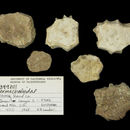Morphology
provided by Animal Diversity Web
Other Physical Features: ectothermic ; bilateral symmetry
- license
- cc-by-nc-sa-3.0
- copyright
- The Regents of the University of Michigan and its licensors
- bibliographic citation
- Pecor, K. 2003. "Dermochelyidae" (On-line), Animal Diversity Web. Accessed April 27, 2013 at http://animaldiversity.ummz.umich.edu/site/accounts/information/Dermochelyidae.html
- author
- Keith Pecor
Reproduction
provided by Animal Diversity Web
Key Reproductive Features: gonochoric/gonochoristic/dioecious (sexes separate)
- license
- cc-by-nc-sa-3.0
- copyright
- The Regents of the University of Michigan and its licensors
- bibliographic citation
- Pecor, K. 2003. "Dermochelyidae" (On-line), Animal Diversity Web. Accessed April 27, 2013 at http://animaldiversity.ummz.umich.edu/site/accounts/information/Dermochelyidae.html
- author
- Keith Pecor
Dermochelyidae: Brief Summary
provided by wikipedia EN
Dermochelyidae is a family of turtles which has seven extinct genera and one extant genus, including the largest living sea turtles.
- license
- cc-by-sa-3.0
- copyright
- Wikipedia authors and editors
Description
provided by World Register of Marine Species
Horny skin smooth, scuteless; carapace black with seven narrow longitudinal ridges, white dotted plastron with five longitudinal ridges; upper jaw with a well-defined cusp on each side, giving the horny beak a W-shaped appearance when viewed from the front; large flippers without claws, the anterior pair much bigger, the posterior broadly connected with the tail by a web in adults .
MASDEA (1997).
- license
- cc-by-4.0
- copyright
- WoRMS Editorial Board

